TO MY READERS: HOW TO USE THE BLOG
Click Here
UPPER WALKER CREEK
UPPER WALKER CREEK
UPPER WALKER CREEK
UPPER WALKER CREEK
CAPOTE CREEK
CAPOTE CREEK
In the last 24 hours some 2 inches of rain has fallen in Candelaria and the ranches to the north in the Sierra Vieja. Walker Creek and Capote Creeks are running fast and according to reports, the Rio Grande is out of its banks at Candelaria. Candelaria lies in a natural flood plain and is subject to severe flooding when rain falls in the Sierra Vieja.The first two crossings of Capote above Candelaria are impassible. We are marooned.
Gj
[ view entry ] ( 7830 views ) | permalink |

ABOVE IS THE BRIDGE ON 3-22-08
PHOTO BY GLENN JUSTICE
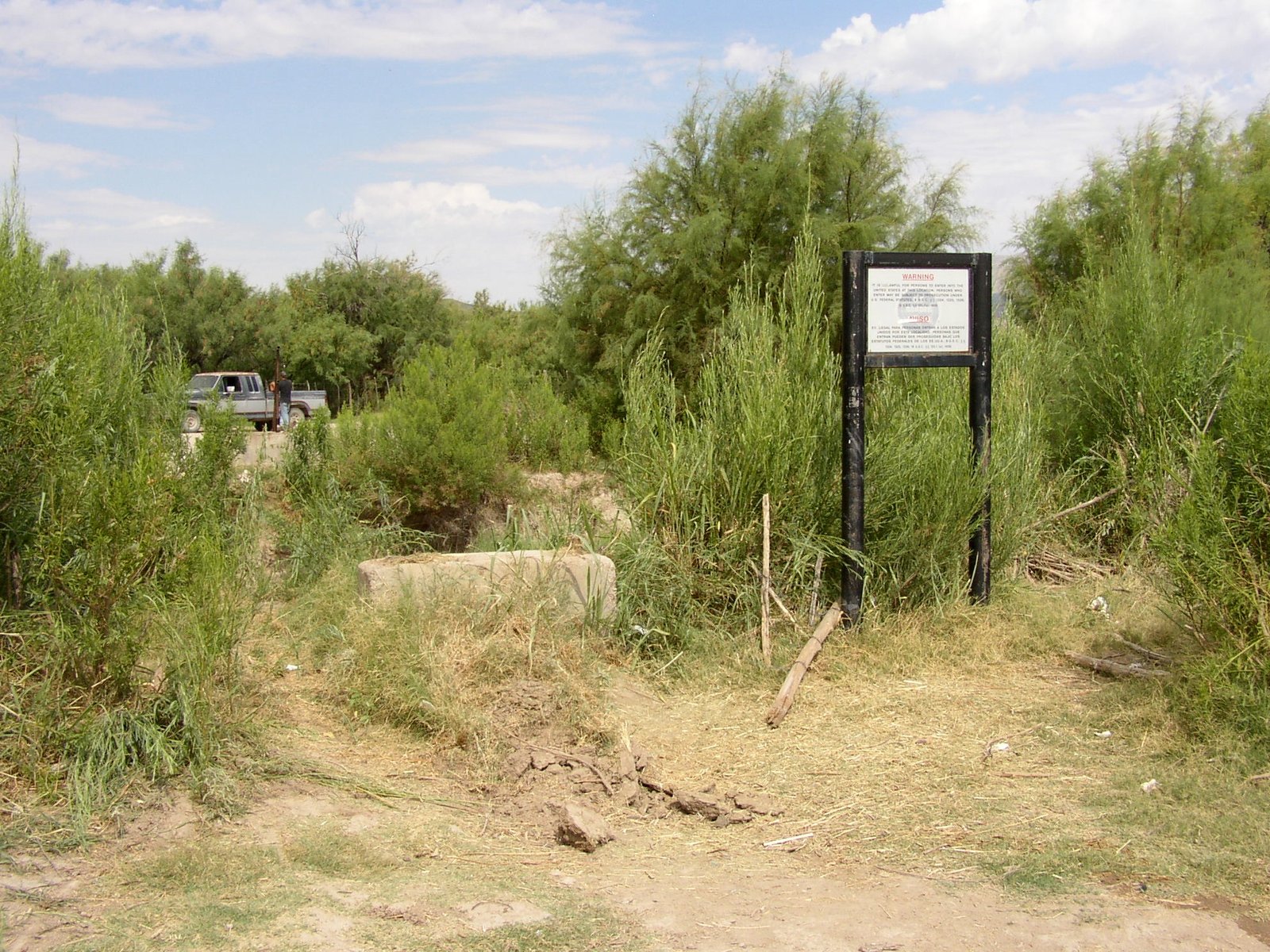
ABOVE IS FORMER BRIDGE SITE ON 3-24-08
PHOTO BY GLENN JUSTICE
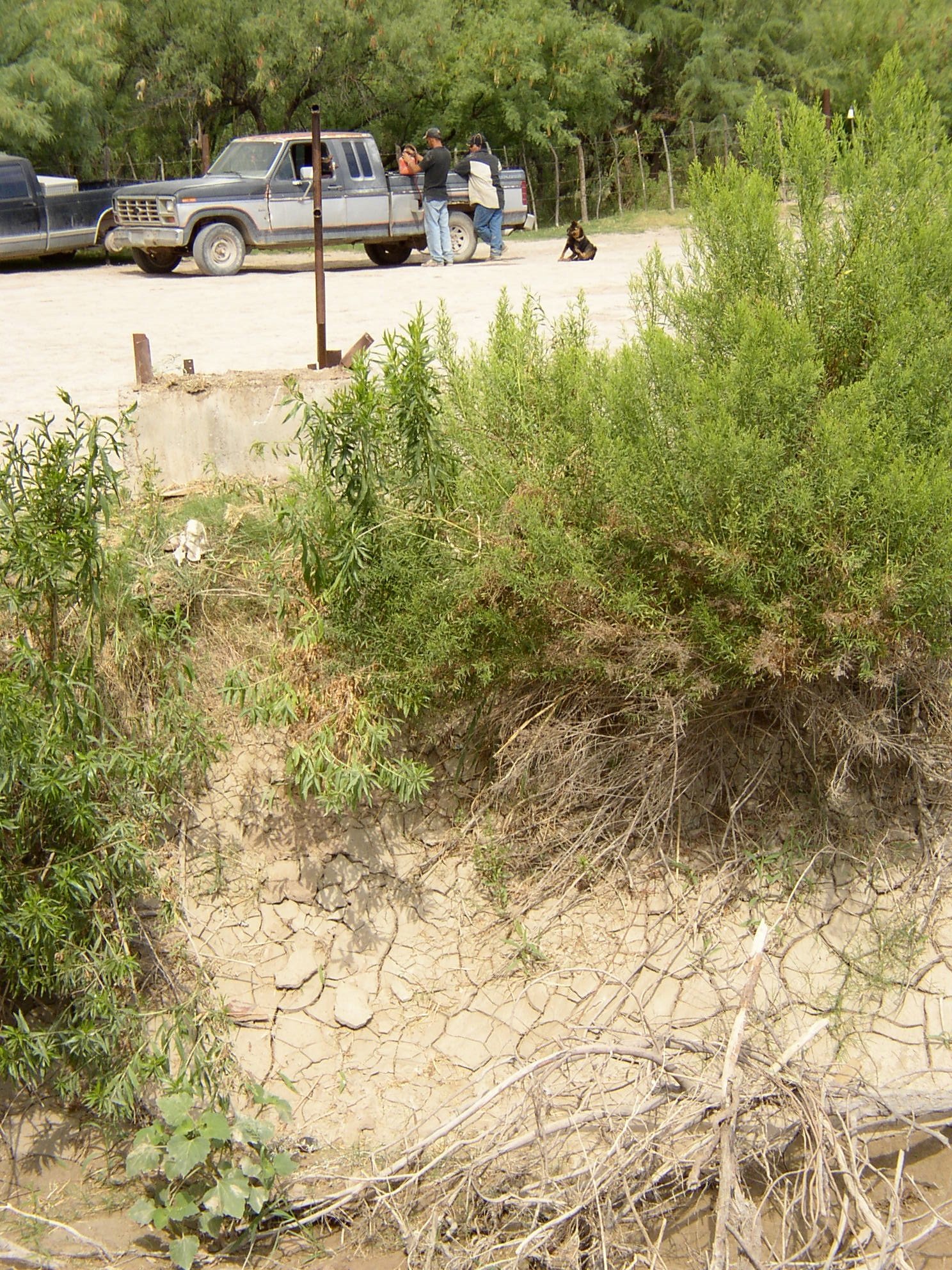
PHOTO COURTESY CLARA LONG@BORDER STORIES.ORG
 PHOTO BY GLENN JUSTICE
PHOTO BY GLENN JUSTICEYesterday after I posted the article and photos of the bridge, a large contingent of Border Patrol trucks and personnel removed the Candelaria footbridge. It no longer exists. As soon as we learned of the removal, we drove to Candelaria arriving there about 10:30 am. The last of the Border Patrol trucks were just leaving and the road blocked by heavily armed but courteous BP guards. I ask if the bridge was gone and if I might go take some photos at the crossing. They let us pass after the last truck drove out of the bosque. The bridge is gone. Not even a scrap or tiny piece of it left on either side of the river. Across the river on the Mexican side, a few amazed locals waved back to us. It was swift and efficient removal. Yesterday, it was there, today it is gone. They hauled every piece of the old bridge out on a flat bed trailer. As we drove by the school, the entire schoolyard was crammed full of Border Patrol vehicles. The remains of the bridge sat encircled on the trailer by U.S. government vehicles. We decided it was time to go home. It is a sad day on the river. For more than 50 years, the little bridge stood as a symbol of cooperation between two tiny Texas-Mexican border villages. Now it is history.
Gj
[ view entry ] ( 4605 views ) | permalink |

PHOTO BY GLENN JUSTICE
PHOTO BY GLENN JUSTICE
PHOTO COURTESY CLARA LONG@BORDERSTORIES.ORG
The old Candelaria bridge is still here. It spans a muddy trickle some five-foot wide in an almost dry arroyo. It's hot in the Presidio Valley. Few venture outside after the cool morning hours. The school kids are out for the summer so they are not using the bridge. Few do these days. Everyone waits to see if the bridge will survive. A squad of Border Patrol men and women stationed at the Candelaria school go about their duties patrolling this part of the border. It's a thankless job and they are the only law we have here. Some Andrew Jackson art painted on an old car hood expresses a lot of feelings about the school being closed. Across the river at the medical clinic, Dr. Maribel Aquino waits and wonders if her link to the outside world will be cut by the removal of the bridge. Manuel Carrasco is doing well and just got his new work visa. Not long ago, Manual suffered a heart attack on the Texas side and thanks to Dr. Aquino's clinic in San Antonio is alive and well today.
Gj
[ view entry ] ( 5703 views ) | permalink |


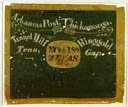
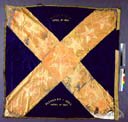
Above are four Texas Confederate battle flags from the Texas State Archives.
Truth is, the thousands of fine, brave Texans who fought and died in the Civil War did not fly the red, white and blue stars and bars of the south into battle. They did not fight to keep their slaves because few owned slaves. Texans joined the Confederate cause and fought and died in most of the major battles of the war. They fought and died because they felt threatened by the Federal Government and the election of Abraham Lincoln.
For more see:
http://www.tsl.state.tx.us/treasures/fl ... flags.html
http://www.tshaonline.org/handbook/onli ... /qkh2.html
Gj
[ view entry ] ( 86365 views ) | permalink |

Glenn Willeford and Gerald Raun have done an insightful study of Big Bend cemeteries. Their "Cemeteries and Funerary Practices in the Big Bend of Texas, 1850 to the Present" is 240 pages packed full of out of the ordinary tidbits of information that genealogists or anyone interested in finding the grave site of a long lost relative will want to read. While many parts of the country have readily available listings of local graveyards and their residents, final resting places in the Big Bend has been a long overlooked topic.
Willeford and Raun did not simply republish courthouse records but did extensive research of the some 63 graveyards in the Texas Big Bend and personally visited each of them. Many of these isolated family cemeteries have escaped official records in Brewster, Presidio and Jeff Davis counties and the book finally documents these historic gravesites. Included are 42 photographs of various cemeteries as well as detailed locations.
Glenn Willeford is an American writer and professor of history who lives in Chihuahua. In 2004, his first novel, "Red Sky In Mourning" became the first English language book published by Universidad Autonoma de Chihuahua. A follow up to Red Sky titled "Passage to Lisbon" is now in the works. Gerald Raun, Ph.D, is the author of four books including the first "Snakes of Texas" offerings and over fifty journal articles on biology and history. "Cemeteries and Funerary Practices" is available at Front Street Books in Alpine. Email Front Street at findit@fsbooks.com or call 432-837-3360.
Also see: http://www.fsbooks.com/books/books.html#willeford
Gj
[ view entry ] ( 5035 views ) | permalink |
John Casas
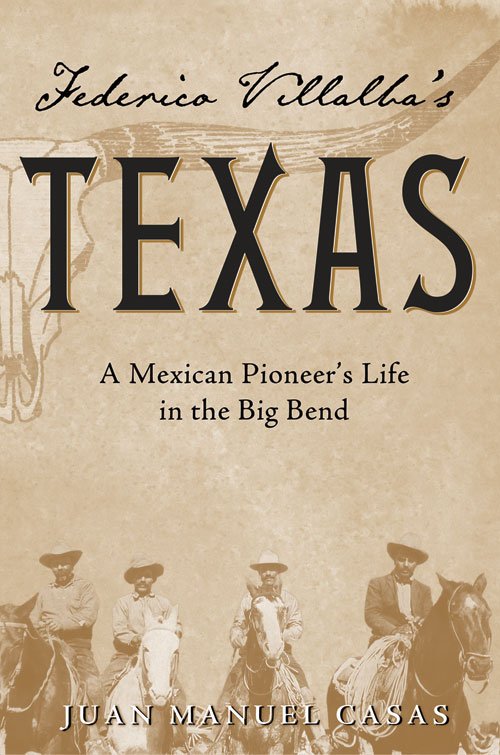
Five years ago I undertook a project that, like a time machine, catapulted me back to the Trojan War, then to our subsequent ancestral home in Italy, and, via Spain and Mexico, to the Big Bend of Texas.
Initially, my intention was to put together a primer for the immediate ancestors of my great-grandfather, don Federico Villalba, who moved from Aldama, Chihuahua, to the border in San Carlos. The "primer" ballooned into a three hundred-plus-page treatise filled with photographs chronicling the Villalba family legacy. The book was received so enthusiastically by our family that I was encouraged to have it published, not only for ancestral knowledge, but as historical record. I am happy and honored to add that my book, Federico Villalba's Texas: A Mexican Pioneer's Life in the Big Bend, is due on the shelves this July.
My mother, Herminia, was born on Rancho Barras on the banks of the Rio Grande, in 1926. She is the daughter of Regina Villalba, Federico's pistol-packing daughter. He also had five sons: Felipe -- the eldest, Jorge, Federico Jr., Jacobo ("Jake"), and Santos.
Barras Ranch was situated in the present-day Big Bend National Park.
The sixteen hundred-odd acres Federico leased from A. J. Compton are designated as the Diablo Ranch on the Park Service map. El Diablo was the family's second landholding. The initial ranch, a ten thousand-acre estate, was situated in Burro Mesa. Federico was obligated to enjoin ownership of that holding to the Alpine law firm of Mead and Metcalf in 1924 in return for legal services when his son Jorge was indicted and tried for homicide in the shooting deaths of the Coffman brothers. Jorge was acquitted of the charges by a Brewster County jury.
Federico, at one time, also owned another ten thousand acres on the west side of the Chisos Mountains. In addition to other ranchland Federico had several sections set back as a hunting preserve on the present-day Terlingua Ranch. In the early 1900s he discovered cinnabar on Cerro Villalba, property that had been named for the family. Federico accepted a partner named William Study and began development of the Study Butte Mine. Cerro Villalba was thereafter called Study Butte. My great-grandfather was also proprietor of the Study Butte Store through the 1920s. Not far away was his Bar La Fiesta, a local "waterin" hole. Across the Rio Grande Federico also owned five-thousand acres in the vicinity of old San Carlos, which today is known as Manuel Benavides; additionally he had a successful talabarteria, or leather goods shop, at Santa Elena on the Chihuahua side across from today's Castol'n (originally also called Santa Elena) in the national park.
For the two years I engaged in research hardly any contemporary documentation of Federico's holdings and accomplishments in the Big Bend came to light. It seemed almost as those had been hidden away. Kenneth B. Ragsdale in his tome Quicksilver: Terlingua and the Chisos Mining Company (Texas A&M University Press, 1976), did, however, single out and devote an entire chapter to the shooting of the Coffman boys and of Jorge Villalba's trial. Ragsdale also mentioned my great-uncle Jake's murder in November, 1931, and the purloining of the family property in the Chisos.
By and large, the record of Villalba experiences in the Big Bend has been condensed to the tragedies that befell them and various other well-placed Hispano-American families. There is so much more to the historical record of occupation in the region that has as yet been told. I am grateful that Mike Hardy at Iron Mountain Press feels the same way. In this offering, and in my upcoming prequel, Of Cowboys and Kings, we invite the enthusiast to sense the Big Bend border country through the aspect of one of our earliest settlers, my visabuelo don Federico Villalba.
The book will be available through Front Street Books (fsbooks.com) in Alpine, TX, Barnes & Noble and Amazon.com and Iron Mountain Press, Houston, TX.
[ view entry ] ( 5709 views ) | permalink |
CANDELARIA BRIDGE ISSUE RESPONSE FROM MARTIN LUJAN-CHEIF OF STAFF FOR TEXAS REPRENSATIVE PETE GALLEGO
Mr. Justice:Thank you for the information. While I was not aware of this, Mr.
Gallego may be. Regardless, I will distribute this to everyone in our
office so that it is on our radar.
Thanks again.
Martin
-----Original Message-----
From: editor@rimrockpress.com [mailto:editor@rimrockpress.com]
Sent: Thursday, June 05, 2008 12:19 PM
To: Martin Lujan
Subject: Candelaria bridge closing issue
Martin,
Please take a few minutes to look at and consider the impact of U.S.
Border patrol ordered closing of the Candelaria brige. You will find
much information about this issue at Glenn's Texas History Blog:
www.rimrockpress.com/blog. Hope that you will make Pete also aware of
the problems if you and he are not already.
Sincerely,
Glenn Justice
Maybe Pete can help? Texas House Representative Pete Gallego may be contacted at:
http://www.house.state.tx.us/members/di ... llego.htm.
No response from U.S. Rep. Ciro Rodriguez despite repeated attempts. Guess he and his staff are too busy. Rep. Rodriguez may be contacted at:
http://www.rodriguez.house.gov/.
Gj
[ view entry ] ( 6515 views ) | permalink |
Have just learned that you can now hear Big Bend radio live on the internet at bigbendradio.com during scheduled times. There you will find the voice of the last frontier broadcasting KVLF and KALP feeds from their studio at Kokernot Field in Alpine. They have Big Bend news, sports and weather and this is great for those of us on the river who cannot hear their signals over the airwaves. You must download Silverlight from Ray's website. It runs beautifully on my osx mac. In addition to the streams, you can download the Alpine La Entrada hearings, weather and local sports and find the streaming schedule. For more info, check out their website. Thanks Ray for this wonderful service!
Gj
[ view entry ] ( 4856 views ) | permalink |
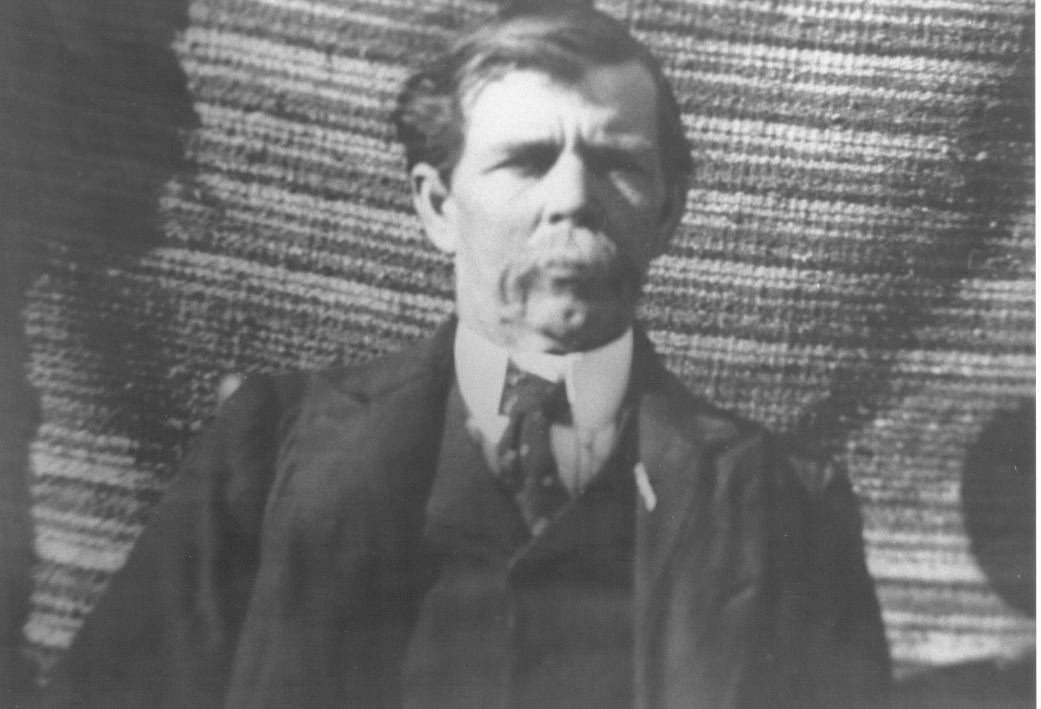
Above is James Judson Kilpatrick Sr. known in later years as the "King of Candelaria".

Above is Darwin Dawkins Kilpatrick, son of J.J. Sr. Dawkins or D.D. served as a scout for the last American punitive expedition into Mexico in August 1919. He operated the Candelaria store until his death in the late 1940's.
In the summer of 1919 Candelaria merchant and Justice of the Peace James Judson Kilpatrick Sr. and two of his sons, Jim and Dawkins found themselves caught up in a storm of controversy. Following the Brite ranch raid on Christmas Day 1916, fear ran high along the Rio Grande in the Big Bend. The civil war in Mexico spurred on by Pancho Villa had turned the village of Candelaria into an armed camp. Most of the population of Candelaria left to find a safer place to live. J.J. at first called for help from the U.S. government to fortify and defend his town. Not wanting to run, the Kilpatricks mounted a Colt .30 cal. machine gun above their store to guard their property. Two Candelaria schoolteachers, Pat Greene and his wife packed pistols and stayed ready to climb to the roof of their residence to fight off a an expected raid from across the river. When the new teacher first arrived in Candelaria, J.J. presented schoolmaster Greene a 7mm Mauser rifle and 1,500 rounds of ammunition. A troop of U.S. cavalry under the command of Captain Leonard F. Matlack worked feverously to move their tent camp from old man Engles cotton patch near the edge of the village to Annias Hill overlooking Candelaria, the river and San Antonio del Bravo.
J.J. and Jim wrote letters to congressmen and penned articles at first published by the San Antonio Express, the El Paso Times and the Marfa New Era. Even the New York Times picked up articles about Candelaria. When some of the press reflected badly on the cavalry, a military press blackout was imposed on reporters who were no longer permitted to go to Candelaria. Instead, the reporters could only write stories based on news releases given them from the army at Fort D.A. Russell in Marfa. But the Kilpatricks kept on with their letters and articles. Finally the El Paso Times refused to publish any more from J.J. Kilpatrick because it was too controversial and inflammatory. It didn't help when J.J. got drunk and accidentally discharged his pistol in an El Paso bordello. The El Paso Times did not fail to report this incident. Following this J.J. started publishing his own newspaper circular printed by his brother H.H. Kilpatrick in Marfa. H.H. was Presidio County judge and publisher of the now lost Marfa New Era newspaper.
This is not to say the Kilpatricks were without fault in all of this. They engaged in a steady and highly profitable illegal arms for cattle trade with Villa agents and others. When Dawkins hauled cotton over the Sierra Vieja trails with large mule drawn wagons, he sometimes returned to Candelaria with the wagons loaded with rifles and thousands of rounds of ammunition. But their writings to tell their version of the border troubles of that time should not be glossed over or ignored. The following is J.J. Kilpatrick's attempt to counter the newspaper stories of what happened. These papers were given to me years ago by J.J.'s granddaughter, Marian Walker. These are J.J.'s words, exactly as written.
Gj
FALL REITERATES CHARGES THAT CARRANZA SOLDIERS ARE SLAIN BY PURSUING U.S. TROOPS (El Paso Times July 22, 1919.)
An examination into the truth of these charges and an account of the killing of two youthful sotol smugglers and of Gregorio Renteria.
Special to Morning Times. Washington, July 21.-Senator Fall of New Mexico reiterated his charges on the floor of the Senate that Carranza officers and men have been shot by American soldiers when pursuing Mexican raiders across the Rio Grande.
Reads messenger from Marfa-Senator Fall read a telegram from Marfa, Texas giving the names and dates on Carranzista officers and soldiers had been killed by American troops in repelling raids. There were more than a dozen names of Mexicans given ranging from Captins (sic) to Lieutenants to provates (sic), and all were said to have been in Carranza's army. He said that bugles and sabers had been found belonging to Carranza's forces.
The following is the message probably read by the Senator, or a similar one based on the same records or files at Colonel George T. Langhorne commanding the Big Bend District;
Ten Carranzistas killed in the Big Bend since Dec.1, 1917
(By Associated Press)
Marfa, Texas, July 21.-Records on file in the headquarters of the Big Bend military district here show that the Mexicans killed by Eighth cavalry (sic) troopers in the Big Bend and Ojinaga districts since December 1, 1917, ten were alleged to have been Carranza officers and soldiers, according to Col. George T. Langhorne, District commander.
Of the ten, five were killed on April 2, 1919, when Captain Matlack crossed the border between Ruidosa and Candelaria with troops K and M of the Eighth Cavalry in pursuit of a band of Mexicans who had driven off cattle from American ranches. The cattle were recovered and the bodies of the five alleged Carranza soldiers (were) identified according to Colonel Langhorne.
Names of the Victims. The names, as shown on the headquarters records, were: Felicito Hernandez, Reyes Callanes, Pedro Fallesco, Andres Rodriguez, Blacida Zapata. The five others, also recorded as Carranza soldiers, who were killed prior that date, were, Lieut. Flores Haciendita, killed December 21, 1918; Captain Avila, killed December 25, 1917; Luis Momoz, Roman Hegura and Carlos Rivera, killed in raids on American ranches the records state. Avila was killed leading the attack on the Brite Ranch Christmas day, 1917, and photographs are on file in military headquarters here showing his body clad in the uniform of a Carranza officer.
"American cavalry troops in the Big Bend district crossed the border eight times during the same period in pursuit of Mexicans who had raided ranches on the American side of the border according to headquarters records."
We as well as most Americans on or near the border been passive Villa sympathizers and in favor of sort of intervention. However, I am now rather lukewarm if not altogether cold, in my attitude towards armed interference in the affairs of Mexico. This change on my part is due to some extent to the conduct of the Eighth cavalry (sic) while on the border. Holding no brief for the Carranza government, yet I must say the truth of Rio Grande history in the Big Bend, demand's that Senator Fall's statements should be challenged and the flimsy and false evidence upon which they are founded exposed. It is inconceivable why the general public, making no effort to ascertain the truth, permitted itself to be hoaxed by the reports formerly sent out, it seems, from military headquarters at Marfa; for, an examination of the facts contained in the Senator's message will reveal how the people have been deceived and certain officers gained notoriety under false pretenses. The files in the office of Colonel Langhorne at Marfa, July 21, 1918, showed that the Mexicans killed by the Eighth cavalry (sic) in the Big Bend and Ojinaga districts since December 21, 1917, ten were alleged to be Carranza officers and soldiers, five killed April 27, 1918, by Captain Matlock (sic) when he chaised into Mexico a band of Mexicans how had driven off cattle from American ranches; namely,Felicito Hernandes, Reyes Callanes (Pallanes), Pedro Fallasco (Zalas), Andrez Rodriguez and Placida (Plasido) Zapata, and five killed prior to the time; namely Lieut. Flores Haciendita, killed Dec. 21, 1918; Captain Avila, killed December 25, 1917; Louis Munoz, Roman Hegura (Segura) and Carlos Rivera.
Since Roman Segura and Carlos Rivera were killed at the same place, in which, and at the same time when Zalas, Rogriguez and Zapata were killed, the tow former should take the places of Feliceto Hernandez and Reyes Pallanes, killed nearly a year subsequently. Attention is called to the interchange of these names, in rely (sic) to indicate the bungling work formerly done in filing away border reports at Marfa.
Now, April 7, 1918, when Roman Segura, Carlos Rivera, Pedro Zales, Andres Rodriquez and Plasida Zapata were killed, Matlock (sic) did not cross the border in pursuit of these Mexicans; neither had theyor any other Mexicans driven cattle or anything else from American ranches. That there had been no raid of any sort is an incontrovertible fact, and the officer responsible for the report that had been should be dismissed from the army as a sensational prevaricator. Matlock (sic), did cross the Rio Grande at or about the time mentioned upone a manufactured hot trail; and learing in San Antonio that Chico Cano who he doubtless had long been planning to kill or capture, had that morning with nine of his men gone up the river, he, Matlack and his troops following after him in no great hurry. Coming upon the Mexicans with their shoes off and asleep by the side of the regular trail, after their noon meal, the Americans surrounded and shot to death five of them, Chico escaping in his stocking feet slightly wounded. Yet Senator Fall read on the floor of the senate a message from Marfa, saying these five Mexicans were alleged to be Carranza soldiers, who having driven off cattle from the American ranches, were pursued across the border by Captain Matlock (sic), and killed, an absolute untruth.
These five Mexicans wore no uniform and were not soldiers, but were locally known as Chico Cano's men. While in the employment of the Carranza government, their exact status of function no one seemed to know. Some said they were border patrollers; others that they were secret scouts; that Chico himself held no commission as a Carranza captain, but was merely chief o the patrolers or scouts. That point, however, is immaterial, since they had not raided any American ranches, or as an organized band committed any depredation on this side of the river. As individuals some of them may have been guilty of the sporadic stealing of horses from ranches in Texas, but that the individual wrongdoing of soldiers is proof of connivance on the part of the government with the commission of crime is simply absurd.
The misleading and worthless character of the files from which Senator Fall's telegram is yet to be told. And it is amazing how reports which are pure fabrication found their way into the former military records at Marfa, yet just listen; Felicito Hernandez and Reyes Pallanes, both of whom I knew, recorded in the army files of the Big Bend district as Carranza soldiers killed prior to April 7, 1918, while raiding American ranches, were only two youthful sotol smugglers, cruelly shot to death by two of Matlock's (sic) soldiers the night of June 1, 1919. Being Justice of the Peace, I investigated the killing. The soldiers late in the evening made an engagement with the boys to bring over some sotol that night-and then shot them down in the shallow water about ten feet from the bank, then they returned with the liquor.
But I have not finished with the crooked files; Luis Munoz, also recorded as a Carranza soldier, etc., was no other that the worthless son of Pablo Munoz, and was hung in Mexico for hog stealing by the Mexicans themselves. I know what I am saying.
Captain Avila-the bandit killed by Sam Neill Christmas day 1917 had on a tight fitting coat fitted with brass buttons. Somebody in Marfa said the picture of the dead outlaw resembled a certain Captain Avila who fled with two thousand others to this side when Villa took Ojinaga. Hence, it seems brass buttons on a coat and the resemblance; somebody imagined he or she noted, was sufficient evidence to prove a Carranzista captain had been killed raiding an American ranch. Ever if the dead raider had once been an officer in the Mexican army the only logical conclusion that could be drawn from this fact is the he was a deserter, Villistas and Carranzistas raided the Brite ranch.
Lieut. Flores Haciendita killed December 21, 1918, was probably intended to read: Lieut. Flores, killed at Haciendita; however I have been unable to locate anyone who has ever heard of the lieutenant or of anyone's being killed on the date above mentioned. Anyway if a Mexican was killed at that place on or about that date his lieutenancy was no doubt similar to the Captaincy of Sam Neil's bandit, namely of American manufacture.
My criticism is not yet exhausted. These files tell of bugles and sabers belonging to he Carranza forces having been found. When and where the message read by the New Mexico senator did not say; and noting in the papers the bugle and saber statement I marveled at the Senator's lack of information. In the homes of a number of Americans on both sides of the border, may be found bugles, sabers, swords, etc., exactly line those in the Eighth cavalry's museum or war. Mr. Fall, no doubt, has a Carranza (Mexican) saber and may be that we gave it to him for we have given away several since the revolution in Mexico first began. My purpose in part for exposing the worthless character of the telegram read by Senator Fall on the floor of the Senate is this: Colonel Shaw was recently sent out by Washington by General March to ferret out the truth in regard to certain border reports. It will be remembered that Major Collins a little pussy footing whitewasher, exonerated Matlock (sic) of all charges I made against him or to any members of my family and among the other things recommended that no more money be spent investigating any charges we may make. But the flowers of truth though withered by time will, as long and justice and right will live, blossom and bloom again. The war department paid no attention it seems to this little swivel chair Major who is no other than the son in law of a life-time political enemy of ours and so disqualified to investigate anything which my family and I were interested.
In his two hour interview with me Colonel Shaw asked how I knew the reports sent out from the border were generally grossly exaggerated or fictitious. Because I explained such was their character as reflected in the newspapers. While admitting that, since I had not seen the reports on file in military headquarters, I could not say that the newspaper copies were correct, yet I called the Colonel's attention to the fact that charges were made prior to this testimony and from the telegram read by the New Mexico Senator, the inescapable conclusion that my charges were true. Without going into detail, I will say of the 21 Mexicans killed on this side of the river since 1917, only one was a bandit, the other 19 being unarmed Mexicans or prisoners; and of the 96 so called outlaws killed by American troops on the other side of the river during the same time, only 16 had corporal bodies, only two of whom being bandits; five were Chico Cano's men; seven were prisoners; one an old blind Mexican killed at Pilares; and one a lunatic killed at the Jacal settlement opposite Indio, by Matlock (sic), so a government scout informed me. Of the remaining 80, six were killed at San Jose on the telephone wires; seventeen killed by Matlock (sic) with spyglasses at the so-called second day's fight opposite Indio. And fifty-seven on paper with hot air rifles.
Of the eight raids implied by the telegram from Marfa, July 21, 1918, only two were genuine bandit excursions-Brite and Nevill raids; two were simply cases of cattle thefts by border thieves-the Tigner and Nunez ranch incidents; one was a bogus thing-and the phantom raid of Chico Cano, and three, if they ever happened must have been trivial affairs, for I have been unable to find anyone who knows anything about them.
James Judson Kilpatrick, Sr.
Candelaria, Texas
Circular No. 3
[ view entry ] ( 6583 views ) | permalink |
Glenn, I have one question. Are the children that are not going to be able to get a ride on the bus to school living in the USA? If not, who is paying the taxes to fund the school that they are attending? If they are living in Mexico, why are they going to school in the US? Lacy
Roy,
Yes, the children live their homes on the U.S. side during the week in Candelaria and these children are U.S. citizens. Their parents who may or may not be U.S. citizens and some are also have residences in Mexico and own or rent houses in Candelaria so the kids may go to school. But the non-citizen parents may not work legally on the Texas side. Renters do not pay property taxes. Anyone who owns property in Presidio County pays the school taxes. Just like in San Angelo where property owners foot the bill for educating the children of renters. The same probably goes for taxpayers in any other place in the U.S.
The children also live in Mexico with their parents on weekends, during the summer or when ever they can. They are going to school in the U.S. to learn English and because their school in San Antonio del Bravo has been closed. There is no other place for them to go to school. The schoolteacher in San Antonio was shot and killed on the steps of the school and no longer operates. This has long been a thorn in the side of the Presidio ISD. The two room Candelaria school became known as the "wetback school" in its century of existence and the Presidio ISD solved their problem by simply closing the school a few years ago. They also closed the Redford school. Now the kids spend more than two hours a day on a bus in order to get an education. This is very hard for them especially the little ones. The Border Patrol today uses the Candelaria school buildings and property as a base of local operations. It costs the school district more money to run the buses back and forth that it did to operate the school. It costs the district the same to pay the teachers in Presidio or Candelaria.
There are no quick and easy answers for all this. The good decent folks on the river do their best to make a living for their families and get an education for their children. The result of the border crossing closing at Lajitas only brought economic ruin to the Mexican town across the river when the lifeblood of the community, tourism, was cut off. The school on the Mexican side at Paso Lajitas closed and the good people had to move away. Now Paso Lajitas is a ghost town, only to the benefit of the smugglers.
Gj
[ view entry ] ( 6174 views ) | permalink |
<<First <Back | 12 | 13 | 14 | 15 | 16 | 17 | 18 | 19 | 20 | 21 | Next> Last>>